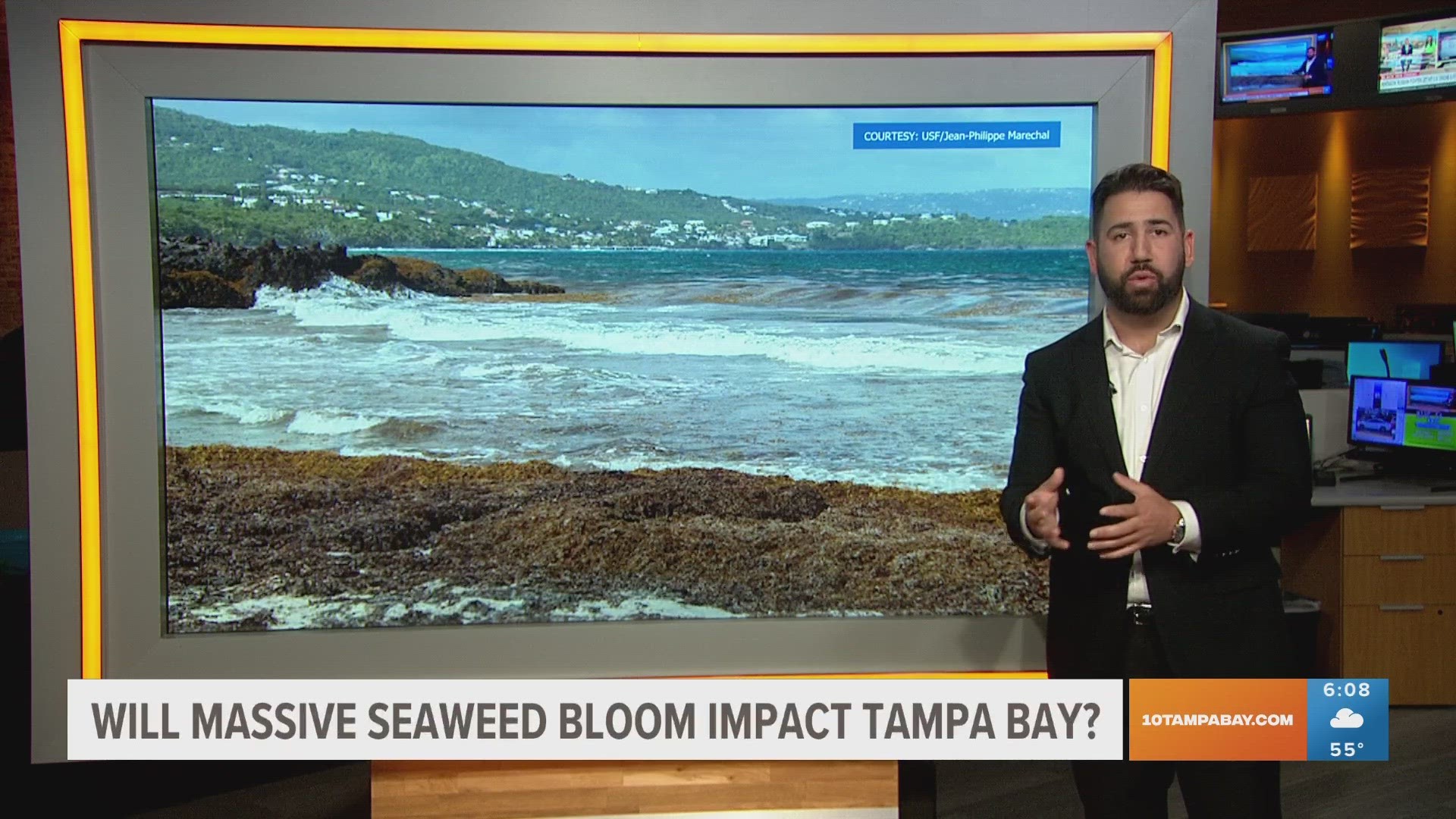ST. PETERSBURG, Fla. — We've been talking about it for about a month — a giant "blob" or bloom of seaweed is hanging out in the Atlantic Ocean. Called Sargassum, it's naturally occurring and grows in the Atlantic every year, collecting in the Caribbean Sea.
This year, scientists with the University of South Florida project the bloom may be the biggest ever recorded. This is according to the latest outlook released Friday.
The bulletin shows this year's Sargassum bloom is already setting a "record abundance" for this time of year — to the tune of about 13 million tons. The Sargassum bloom spans about 5,000 miles.
This "record abundance" seen in the month of March was largely due to the portion of the bloom in the central East Atlantic.
In the months ahead, scientists forecast the Sargassum bloom will continue to grow, causing the seaweed to accumulate in the Caribbean Sea and then move westward. Some of the Sargassum accumulated there will eventually be transported into the Gulf of Mexico and impact parts of the Florida coast.
"As previously predicted, although the peak month of June or July is several months away, there is already a sign that this year’s Sargassum bloom will likely be the largest ever recorded, with major impacts throughout the next few months," the report stated in part.
It's important to note the bloom doesn't move and it's not really a "blob," scientists say.
10 Tampa Bay's Aaron Parseghian spoke with USF Oceanography Professor Dr. Chuanmin Hu who says the bloom itself doesn't move from its spot in the Great Atlantic Sargassum Belt — which extends from West Africa to the Gulf of Mexico — but rather pieces will "break away" from the main bloom and that's what eventually makes its way to land.
However, the Sargassum bloom likely won't impact Tampa Bay-area beaches.
That's because the seaweed will follow the Gulf Stream current, which moves around Cuba, past the Florida Keys and then makes its way around Miami and the east coast of Florida, it's those beaches where the seaweed will likely wash ashore.
As to the "blob" part, scientists say the bloom refers to the Sargassum clumps and mats that are scattered across the 5,000-mile belt. Meaning in reality, there's no continuous, 5,000-mile-long "blob" of seaweed hanging out in the middle of the ocean.
Why does this even matter? The Sargassum isn't harmful and is actually an important habitat for certain animals that have adapted to rely on the floating algae, such as shrimp, crab, sea turtles and tuna.
However, when it dies by coastlines it can lower water quality and emits a rotten egg-like smell. This large amount of seaweed can often hamper beach tourism in the Caribbean Islands and have negative economic effects.

